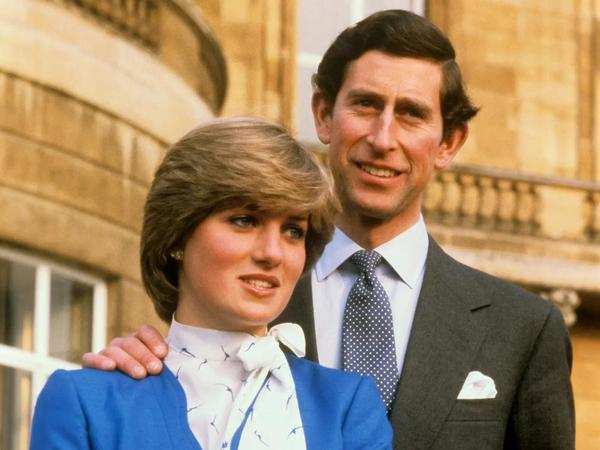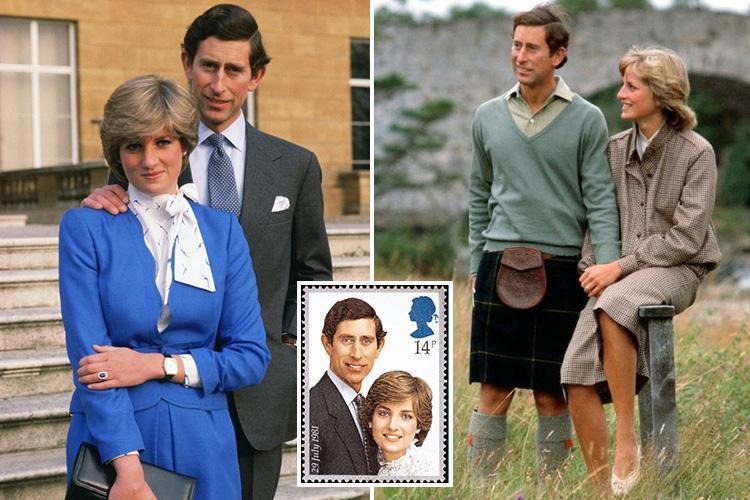The relationship between Prince Charles (now King Charles III) and Princess Diana remains one of the most widely discussed royal narratives of the 20th century. From their lavish 1981 wedding to their high-profile separation in 1992 and divorce in 1996, their marriage was covered extensively in global media.
While much attention has been paid to their personal dynamics and public roles, one lesser-known observation about their formal portraits has drawn recent interest: the noticeable height difference in staged photos. Although Prince Charles and Princess Diana were nearly the same height in real life, many official photographs depict Charles as significantly taller. This visual inconsistency has been the subject of discussion by scholars and commentators alike.
Prince Charles and Princess Diana: Real-Life Height
According to multiple verified sources, Princess Diana stood at 5 feet 10 inches (1.78 meters)—taller than the average height for a British woman. Prince Charles is also reported to be around 5 feet 10 inches, making the couple virtually the same height.
This fact has been widely reported by outlets such as BBC, The Guardian, and Marie Claire. Notably, their sons, Prince William and Prince Harry, both of whom are well over six feet tall, have inherited their parents’ tall stature.
Despite their equal height, in many official portraits and posed photographs during their marriage, Prince Charles appears noticeably taller. This visual discrepancy has intrigued royal watchers and sociologists interested in the portrayal of gender roles in public figures.

Academic Commentary on the Height Difference
In March 2017, Philip N. Cohen, a professor of sociology at the University of Maryland, shared a series of observations on social media pointing out this visual inconsistency. Cohen highlighted several formal photos, including a commemorative postage stamp, in which Prince Charles appeared a head taller than Princess Diana.
Cohen’s commentary was not about assigning blame but rather analyzing how visual representation can reflect societal norms—particularly the traditional expectation that men should be taller than their female partners. His posts sparked thoughtful dialogue about how cultural standards may influence public imagery, even for members of the royal family.
These insights were later shared by media outlets such as The Society Pages, a reputable academic blog that examines sociological trends in public life.

Footwear and Posture in Royal Imagery
Media analysis has noted that Princess Diana often wore flat shoes during official appearances with Prince Charles. According to reports by Marie Claire UK and Harper’s Bazaar, Diana occasionally avoided high heels during joint appearances—possibly contributing to the perception of a greater height difference.
In several engagement and wedding photos, Diana is seen standing slightly below Prince Charles, such as on steps or inclined surfaces. For example, in their 1981 engagement photo outside Buckingham Palace, Charles stood a step above Diana, subtly altering the visual dynamic of the image. This staging technique may have been intentional, although no official statement has ever confirmed it.
Such photography practices are not unusual and have historically been used in public portraits to align with cultural ideals, especially regarding male and female stature in couples.

Public Reactions and Media Discussion
The discrepancy was noted by audiences even during the couple’s public life, but the issue drew renewed attention years later through academic and digital commentary. Readers and royal fans took interest not because it represented deception but because it highlighted how visual presentation can subtly reinforce social norms.
In candid, unposed photographs and video footage, the difference in height between Charles and Diana is not as noticeable. This contrast between formal and informal imagery further emphasized how posture, positioning, and camera angles can influence public perception.
Diana’s Height and Public Image
Princess Diana’s height was frequently mentioned in fashion and lifestyle coverage during the 1980s and 1990s. Standing above the national average, she often chose sleek, tailored silhouettes and developed a signature style that embraced her height. Her wardrobe choices were widely praised for their elegance, and she became one of the most influential fashion figures of her time.
Despite the focus on appearance in public life, there is no official record or public statement from Diana herself addressing the height portrayal in photos. Much of what is known about her approach to public presentation comes from authorized interviews and verified biographies, including Diana: Her True Story by Andrew Morton, which was produced with her cooperation during her lifetime.
A Broader Look at Royal Imagery
The British royal family has long relied on photography as a tool for public engagement. From the early black-and-white portraits of Queen Victoria to the digital releases from Kensington Palace today, imagery has played a significant role in shaping royal perception.
Royal photographers, including Tim Graham, Anwar Hussein, and Lord Snowdon, have all contributed to the visual archive of the monarchy. Many of their photos—both candid and staged—remain key sources for royal historians and biographers.
The presentation of royal couples in public life often reflects deeper societal expectations about gender, leadership, and tradition. While no official directive has ever been released regarding height representation in royal portraits, some scholars argue that traditional norms, such as male height superiority in visual hierarchy, may have unconsciously influenced these photo sessions.
Why the Height Detail Still Resonates
What seems like a minor visual detail has become a talking point because it reflects broader cultural conversations around gender roles and representation. In today’s media landscape, audiences are more attuned to how public figures—especially women—are presented and what those representations signify.
The case of Charles and Diana’s photographic height difference is not a controversy but rather an illustration of how even subtle details can influence perception. It also serves as a reminder of how closely royal figures are scrutinized—not just for their roles and duties, but for their appearance, posture, and the way they relate to one another in public.
Conclusion
Princess Diana and Prince Charles were among the most photographed couples in modern history. While their real-life height was almost identical, many official photos portrayed a greater disparity—an observation that has drawn renewed attention from both sociologists and royal watchers.
Rather than focusing on speculation, this observation provides an interesting lens through which to examine public imagery, visual conventions, and how longstanding cultural norms shape presentation, even within the highest institutions. The portrayal of their height may have been influenced by traditional expectations, but it ultimately reflects a broader societal tendency that extends far beyond the royal family.
For those interested in royal history, visual storytelling, or media representation, the case of Charles and Diana’s photos offers an insightful example of how carefully curated public images can influence perception—and how those perceptions evolve over time.


